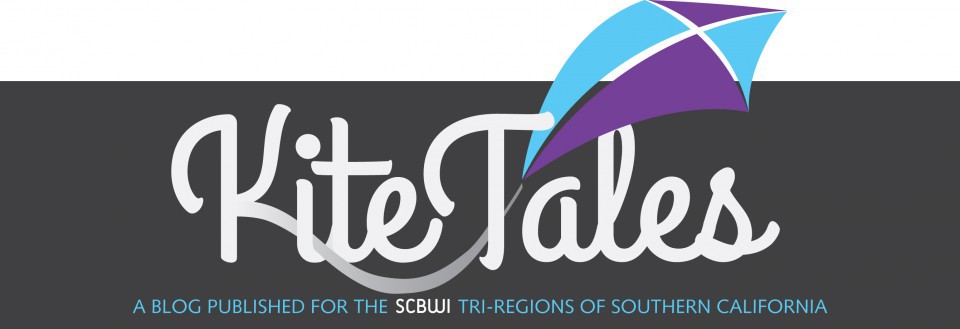Tags
Elizabeth Van Steenwyk, mentor, mentoring, mentorships, Sherry Shahan, volunteering, writing exercise, writing tips
By Sherry Shahan

Elizabeth Van Steenwyk signs her new picture book Blacksmith’s Song. (Peachtree Pub.)
I was clueless about children’s books when I signed up for a writer’s workshop years ago with the prolific Elizabeth Van Steenwyk. Her credits: Seventy-five fiction and nonfiction titles. Impressive. But what struck me most was her generosity.
After reading my WIP, Elizabeth offered to send it to her editor at a school book-fair publisher. Willowisp Press became home for my first six middle-grade novels.
When our SCBWI region began discussing a mentorship program, I knew I wanted to be involved.
I read my mentee’s 90,000-word Y.A. historical novel with my metaphorical hands tied behind my back. No editing allowed. During our first conversation, I listened while she shared the story behind her story.
Together we set short- and long-term goals that reflected the overall direction she wanted for her novel. I tried not to assume anything. She knew the manuscript was too long. That gave us a starting point.

Sherry Shahan signs her book, Skin and Bones. (A. Whitman)
As an exercise, I highlighted sentences that were excessively wordy. I gave examples of how the same information could be conveyed in a fraction of the words — by either creating a fresh turn-of-phrase or choosing a sensory detail that mirrored the emotional state of a character.
Her assignment: Do the same with an entire chapter. She caught on quickly.
Next, I asked her to clarify the main character’s “controlling role.” For instance, I’m a mother, grandmother, friend, writer, traveler, dancer, etc.
“In early drafts we tend to give our characters too many roles,” says Kathi Appelt, Newbery Honoree and NBA finalist. “But a lack of focus can muddy the plot.”
My mentee defined her protagonist as “his father’s son.” This realization helped her understand what powered his thoughts and actions. It also helped her decide what sections to cut and where to trim. More exercises followed.
 We emailed and spoke on the phone often. We met for lunch. I shared my experiences and struggles as a writer and reinforced that her writing path was unique. It didn’t need to resemble mine or anyone else’s. Communication built confidence in both of our positions.
We emailed and spoke on the phone often. We met for lunch. I shared my experiences and struggles as a writer and reinforced that her writing path was unique. It didn’t need to resemble mine or anyone else’s. Communication built confidence in both of our positions.
As Oprah Winfrey said, “A mentor is someone who allows you to see the hope inside yourself.”
What if you want to give back but aren’t comfortable being a mentor? I bet you’re already doing it. Buying books at a friend’s launch and donating copies to a school, library, or a homeless shelter.
Perhaps you’d like to contribute on a global level? Check out Worldreader, an organization that offers digital reading to underserved communities around the world. Reach Out & Read is a clinic-based program designed to stimulate early brain activity; kids go to the doctor for a check-up and come home with a book.
 Writing can be difficult, especially when attempting a new genre. Trying to do it alone can be, well, nearly paralyzing. Most great leaders have had mentors. Steve Jobs had Bill Campbell; Mark Zuckerberg had Steve Jobs. Bill Gates had Warren Buffet.
Writing can be difficult, especially when attempting a new genre. Trying to do it alone can be, well, nearly paralyzing. Most great leaders have had mentors. Steve Jobs had Bill Campbell; Mark Zuckerberg had Steve Jobs. Bill Gates had Warren Buffet.
And I have Elizabeth Van Steenwyk.
Who do you have? And, perhaps more importantly, who has you?
For more fantastic content, community, events, and other professional development opportunities, become a member of the Society of Children’s Book Writers & Illustrators today! Not sure if there is a chapter in your area? Check here.
 Sherry Shahan’s latest YA novel is Skin and Bones (A. Whitman). She’s coached writers in various genres, introduced writers to agents and editors, organized and facilitated workshops, and supported literary events worldwide. She holds an MFA in Writing for Children and Young Adults from Vermont College of Fine Arts and teaches an ongoing writing class for UCLA Extension. Visit www.SherryShahan.com.
Sherry Shahan’s latest YA novel is Skin and Bones (A. Whitman). She’s coached writers in various genres, introduced writers to agents and editors, organized and facilitated workshops, and supported literary events worldwide. She holds an MFA in Writing for Children and Young Adults from Vermont College of Fine Arts and teaches an ongoing writing class for UCLA Extension. Visit www.SherryShahan.com.
Photos provided by Sherry Shahan and Photo by Alexis Brown on Unsplash.

Pingback: Can a Mentor Be the Boost You Need to Succeed? | Kite Tales
Oh – I loved this piece!!! And particularly the Oprah quote. I have had several mentor, some formal, some not. My debut YA novel is coming out next summer and writing the book in the first place was due to a mentor’s suggestion.
LikeLike